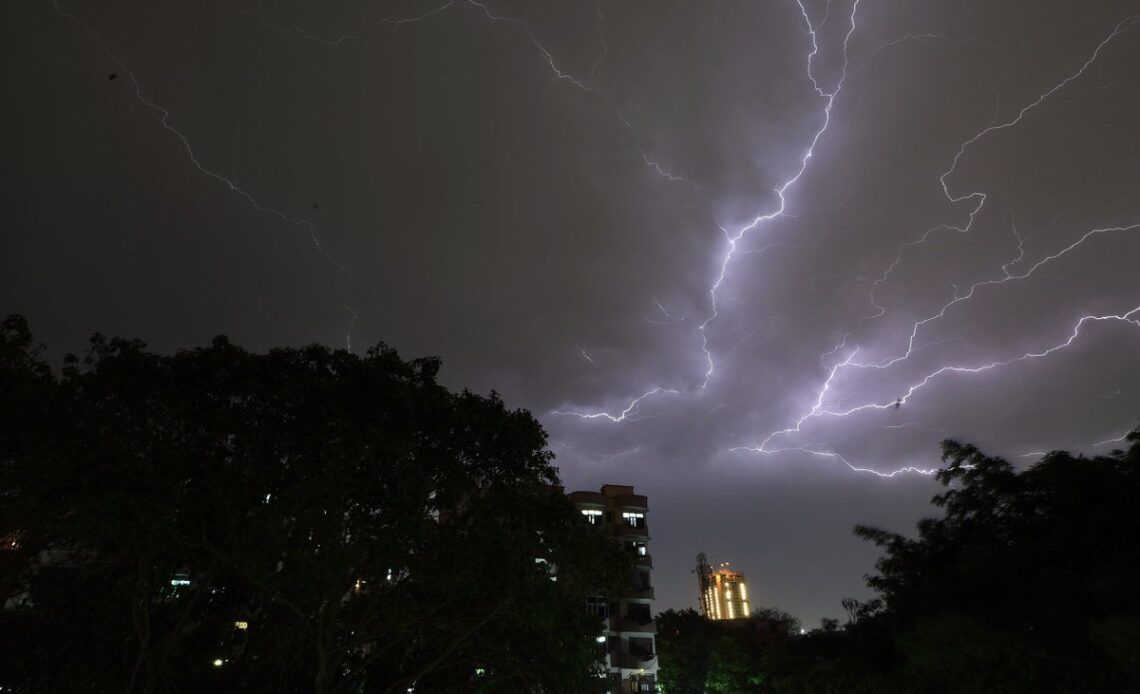Lightning strikes have killed seven more people in India’s most populous state in the last 24 hours, taking the death toll to 49 for just this week and to almost 70 for two states, as the climate crisis makes occurrences of strikes more frequent.
The state administration of Uttar Pradesh on Thursday said seven people, most of them farmers, were killed in a lightning strike near the city of Kaushambi after they took refuge under a tree during rain. Last week, 14 people were reported dead.
Earlier this week, the neighbouring state of Bihar reported at least 20 deaths across eight districts in a two-day period due to lightning strikes, taking the death toll for this year so far to 181 in the state.
The increased instances of deaths by lightning this year have prompted the state government to issue fresh guidelines for safety in Uttar Pradesh with chief minister Yogi Adityanath calling for the implementation of an early alert system for thunderstorms and lightning.
Frequent lightning strikes are occurring as most parts of India witness an intense monsoon this month with lightning and thunderstorm warnings issued by authorities in several pockets.
Lightning kills about 2,000 to 2,500 people every year in India and places like Bihar are more vulnerable to these strikes.
One of the reasons for India being more susceptible to deaths due to lightning strikes is that a large number of people work outdoors. But it is also a result of poor awareness and education about the dangers of lightning.
There is also growing evidence that the incidence of lightning strikes is getting higher, both in India and across the world, as a result of the climate crisis.
A warming climate leads to more extreme weather, like thunderstorms, and according to a study published by the University of California in 2015, for every 1C increase in temperature, the frequency of lightning strikes increases by 12 per cent.
Hot weather and humidity also create ideal conditions for thunderstorms, according to experts. So as the globe continues to warm and hotter climates face more heatwaves, more storms and lightning strikes become likely.
According to data compiled by Third Pole from India’s National Crime Record Bureau, over 100,000 people died due to lightning strikes between 1967 and 2019 in India, which makes up for 33 per cent, or one-third, of all deaths caused by natural hazards during the 52-year period.
Despite India being highly vulnerable to lightning and the atmospheric phenomenon…
Click Here to Read the Full Original Article at The Independent Travel…
